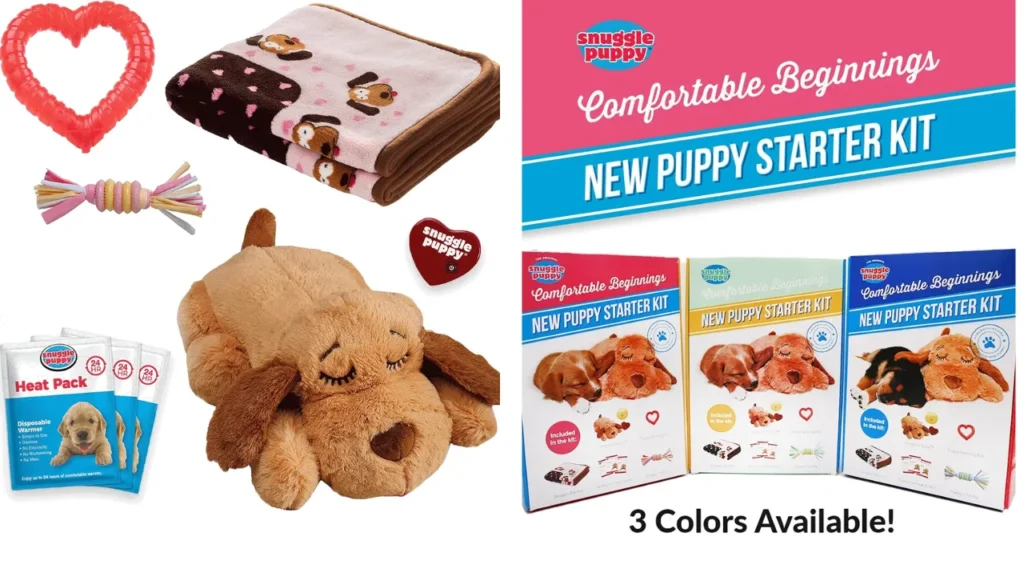Top 6 Dog Breeds for Homes With Cats — Quick, Friendly Guide
This short, friendly guide helps you pick calm, cat-friendly dogs for a peaceful home.
Meet gentle breeds like Golden Retriever, Labrador Retriever, Beagle, Cavalier King Charles Spaniel, Basset Hound, and Pug — the Top 6 Dog Breeds for Homes With Cats. You’ll get simple tips on introductions, easy training, and how to read pet body language.
Use the short checklist to keep your pets safe and help them become pals.

Summary
Key takeaway
- Choose calm, cat-friendly breeds so your cat feels safe.
- Introduce them slowly with scent swaps and short visits.
- Keep your dog leashed at first and watch body language.
- Train your dog to respect your cat’s space and high spots.
- Provide separate feeding and litter areas.
Top 6 Dog Breeds for Homes With Cats — quick overview
If you’re hunting for a dog that’ll share your sofa with a feline friend, you’re in the right place. This list focuses on dogs that are generally calm, friendly, and more likely to accept a cat as a housemate. I’ve lived with dogs and cats under one roof, so I’ll toss in a few things that actually worked for me.
Why choose cat-friendly dog breeds for a calm home
Choosing a cat-friendly dog breed lowers stress and keeps the house peaceful. Cats are creatures of habit; an overly excited dog upsets that routine. Calmer breeds usually have lower prey drives and softer play styles — fewer chases, fewer hisses, fewer broken vases. Match energy, size, and temperament to your cat’s vibe: an older, chill dog often fits better with a timid cat than a bouncing puppy.
For ideas on temperaments to prioritize, see this guide to calm dog breeds.
Helpful links:
- ASPCA on pet introductions: https://www.aspca.org/pet-care/dog-care
- AKC breed info: https://www.akc.org/dog-breeds/
Golden Retriever — gentle, loving, usually great with cats
The Golden Retriever is the classic family dog: friendly, patient, and social. They respond well to reward-based training and can learn to be gentle around cats. Because they’re energetic, daily walks and play help prevent overexcited behavior.
Why they work:
- Low aggression, high social skills.
- Easy to train.
- Gentle mouth and patient nature.
Potential downsides:
- Heavy shedding and grooming needs.
- High energy in youth; an adult is a safer match for nervous kitties.
- Size can intimidate some cats at first.
Real-life tip: introduce a Golden slowly and use barriers for first meetings.
Labrador Retriever — playful, patient, a top choice for homes with cats
Labrador Retrievers are smart, friendly, and usually accepting of cats. Train commands like leave it and gentle early. Labs need exercise; a well-exercised Lab is less likely to pester a cat.
Why they work:
- Friendly and trainable.
- Usually tolerant, not overly territorial.
- Great for active families.
Potential downsides:
- Overenthusiastic when young.
- Require physical and mental activity.
- Chewing in adolescence.
Pro tip: start with leash introductions and let the cat approach first.
Beagle — small to medium, often gets along with cats
The Beagle is curious, social, and often cat-tolerant if socialized early. They follow scents but are usually not driven to hunt cats; however, their vocal nature can alarm shy felines.
Why they work:
- Moderate size, friendly nature.
- Social and usually non-aggressive toward cats.
- Adaptable to home life.
Potential downsides:
- Can be noisy.
- Strong scent drive may spark chasing.
- Need mental stimulation.
Supervise early introductions and use scent training.
Cavalier King Charles Spaniel — mellow, excellent companion for cats
The Cavalier King Charles Spaniel is gentle, affectionate, and small — ideal for skittish cats. They’re lap dogs who thrive in relaxed homes and generally have a low prey drive.
Why they work:
- Small, calm, people-focused.
- Low prey drive.
- Great for apartments.
Potential downsides:
- Separation anxiety if left alone long.
- Regular grooming required.
- May follow the cat too closely if overly bonded.
Many Cavaliers and cats become instant couch buddies.
Basset Hound — slow-moving, calm dog for multi-pet households
Basset Hounds are mellow and steady. Their slow pace and scent focus make them less likely to chase a cat that moves quickly.
Why they work:
- Slow movement reduces cat stress.
- Friendly and tolerant.
- Great for relaxed households.
Potential downsides:
- Stubborn training style.
- Can be vocal (howls).
- Watch ears and hips for health issues.
Patient training and predictable routines help Bassets integrate smoothly.
Pug — small, easygoing, and a good match for cats
Pugs are compact, affectionate, and often tolerant playmates for cats. Their low-speed play and social nature usually don’t threaten a cat.
Why they work:
- Small, friendly, social.
- Low tendency to chase.
- Great for apartments.
Potential downsides:
- Brachycephalic breathing issues; watch heat.
- Can be stubborn with training.
- May want constant affection.
Pugs often become playful companions for indoor cats.
Top 6 Dog Breeds for Homes With Cats — Quick comparison
- Golden Retriever — large, high social skills, best as calm adult.
- Labrador Retriever — large, energetic, needs exercise and training.
- Beagle — small/medium, friendly, scent-driven.
- Cavalier King Charles Spaniel — small, gentle, apartment-friendly.
- Basset Hound — medium, slow-moving, very mellow.
- Pug — small, social, good in tight spaces.
This quick comparison helps you match breed size and energy to your cat’s personality.
Large dog breeds good with cats — what to expect
Large dogs can be gentle companions if temperament, not size, is prioritized. Breeds like Great Danes, Newfoundlands, and Saint Bernards are often calm and cat-tolerant. Meet dogs before adopting, prefer adults with proven calm behavior, and teach cues like settle and leave it. Always supervise first interactions.
For adoption-ready tips on evaluating temperament and meeting dogs, see this proven methods to find the perfect dog for adoption.
Small dog breeds compatible with cats — size, energy, and play styles
Small dogs usually feel less threatening, but some terriers chase by instinct. Breeds like Cavalier, Bichon Frise, and Shih Tzu often mesh well. Look beyond size to energy and play style — a small rough-and-tumble dog can stress a quiet cat more than a large calm one.
Checklist for small dog compatibility:
- Low prey drive or socialization with cats.
- Energy level matches your cat.
- History of living with small animals, if possible.
If you live in an apartment, compare options with this apartment-friendly breeds guide.
Whether they’re new to the family, or perhaps just going through a tough time, the Snuggle Puppy starter kit has been designed to provide comfort and help relieve anxiety in your four-legged friend, containing all of the items you need to give them a comfortable beginning to their new life. If you still don´t buy click here.

Introducing dogs to cats successfully — step-by-step
How you introduce them matters more than breed. A calm plan prevents drama.
- Start with scent swaps (swap bedding).
- Use a barrier for first visual meetings (baby gates).
- Keep the dog on leash and the cat free to approach.
- Reward calm dog behavior — treats work wonders.
- Gradually increase exposure time while watching body language.
- Give the cat safe high spots and escape routes — never force interaction.
For smoother transitions after adoption, these smooth transition tips and this checklist on preparing your home for an adopted dog are handy.
Take as long as needed — days or weeks. If the dog is reactive, consult a trainer or behaviorist.
Quick tips:
- Keep meetings short and positive.
- Avoid loud praise that might scare the cat.
- Use toys and treats to build good associations.
Training tips to help dogs and cats live together peacefully
Training is the glue that holds multi-pet homes together.
- Teach essential cues: sit, stay, leave it, and settle.
- Reward calm behavior near the cat.
- Practice impulse-control games to reduce reactivity.
- Use routines: feeding, playtime, and quiet time.
- Crate training gives the dog a safe spot; cat trees give vertical territory.
For ideas on trainable, loyal breeds and how smart dogs help with obedience, see this piece on the most intelligent and loyal breeds. If you adopted recently, these adoption success strategies include training-focused advice.
When to get help:
- If the dog barks, lunges, or fixates on the cat.
- If the cat hides constantly or becomes aggressive.
- If you’re unsure how to proceed safely.
Signs of dog and cat compatibility — read their body language
Reading body language prevents misunderstandings.
Dog comfortable: relaxed body, mid-height wag, soft eyes.
Dog stressed: stiff body, fixed stare, lip licking, tail high and still.
Cat comfortable: slow blink, ears forward, relaxed tail, voluntary approach.
Cat stressed: puffed tail, hissing, flattened ears, hiding, swatting.
To learn more about feline signals and sounds that indicate mood, check what your cat’s sounds mean. For managing litter access and avoiding conflicts around the litter box, see insider litter-box tips.
If you see tense signals, separate calmly and try shorter, controlled meetings. Slow progress beats a single bad introduction.
Choosing the best dog breeds for homes with cats — energy, age, and family fit
Match lifestyle to breed. Ask: is my cat shy or bold? Do we have kids? How active is the household?
- Energy: pair high-energy dogs with playful cats; quiet dogs with mellow cats.
- Age: older, calm dogs suit senior cats; puppies may overwhelm anxious felines.
- Family fit: busy homes often prefer low-maintenance, calm breeds.
Consider grooming, vet costs, and training budget. Slow introductions are still essential, even with a perfect breed.
If you’re adopting, follow these best practices for adopting a dog to increase your chances of a good match.
Quick decision questions:
- Will the dog get enough exercise?
- Does my cat enjoy other animals?
- Can we afford training and vet care?
Quick checklist for safe dog breeds for cats and non-aggressive dogs for cats
Use this when evaluating dogs for a home with cats:
- Breed temperament: calm, social, low prey drive.
- Age: adult dogs often integrate more smoothly.
- Socialization: previous positive exposure to cats?
- Energy level: matches the cat’s activity.
- Training readiness: responds to basic obedience cues.
- Health: no conditions causing irritability.
- Supervised intro: barrier-based initial meetings.
- Escape routes: cat has high places and hiding spots.
- Separate feeding and resting areas.
- Professional help: available if aggression appears.
If you’re preparing to bring a newly adopted dog into your home, these practical home-prep steps are useful.
How to create a harmonious pet household with dogs that get along with cats
Harmony is built with routines, space, and respect.
- Give each pet their own zones: beds, feeding areas, and toys.
- Provide vertical space for cats: shelves, trees, window perches.
- Schedule daily dog walks and quiet times for your cat.
- Feed pets separately and use feeding as training opportunities.
- Keep toys appropriate and separate.
Household habits that help:
- Positive reinforcement for calm behavior.
- Scheduled veterinary checks.
- Clear rules the whole family follows.
- Patience during transitions (moving, new baby, new pet).
Before adopting, read this complete guide to adopting a dog so you can set the right routines from day one.
Reflection and conclusion — try these tips and share your story
This article, titled Top 6 Dog Breeds for Homes With Cats, covers breeds, introductions, training tips, and real-life tricks. A great breed helps, but personality matters most. Slow, thoughtful introductions pay off — patience saves stress later. If you follow these steps, you’ll minimize conflict and increase the chance they’ll bond.
Share your success stories or ask a trainer if things get tricky — real experiences help others.
Conclusion
Pick calm, cat-friendly breeds like Golden Retriever, Labrador Retriever, Beagle, Cavalier King Charles Spaniel, Basset Hound, or Pug. Start slow with scent swaps, a barrier for first views, and short, leashed meetings. Reward calm behavior and watch body language closely. Match the dog to your cat’s energy, age, and temperament. With the right breed, thoughtful introductions, and consistent training, your pets can become roommates — maybe even friends.
For more adoption and preparation resources, see this essential guide to adopting a dog.
Frequently Asked Questions
Q: What are the Top 6 Dog Breeds for Homes With Cats?
A: Golden Retriever, Labrador Retriever, Cavalier King Charles Spaniel, Basset Hound, Beagle, Pug — all generally friendly and cat-tolerant.
Q: How do you introduce a dog from the Top 6 Dog Breeds for Homes With Cats to your cat?
A: Go slow: swap scents, use short leashed meetings behind a barrier, reward calm behavior, and provide escape routes for the cat.
Q: Which of the Top 6 Dog Breeds for Homes With Cats fits small homes best?
A: Pug and Cavalier King Charles Spaniel — small size and lower energy make them apartment-friendly; compare options in this apartment living guide.
Q: Will a puppy from these breeds chase your cat?
A: Puppies may chase out of curiosity or play. Supervise, train, and redirect with treats and toys.
Q: How long until your cat and a dog from the Top 6 Dog Breeds for Homes With Cats get along?
A: It can take days to months. Let them set the pace and stay consistent.
Q: Are any of the Top 6 Dog Breeds for Homes With Cats good for seniors?
A: Yes — Pug, Cavalier, and Basset Hound are often good for seniors due to their calm natures.
Q: How do you stop your dog from eating your cat’s food or using the litter area?
A: Keep food in separate rooms, raise bowls, block litter access, and train with rewards and supervision. For more on litter management, read these litter-box tips.
**Sidnir Vieira**
Founder of TechHavela
A passionate pet and tech content creator, helping dog owners across the U.S. make smarter decisions for their furry friends.



